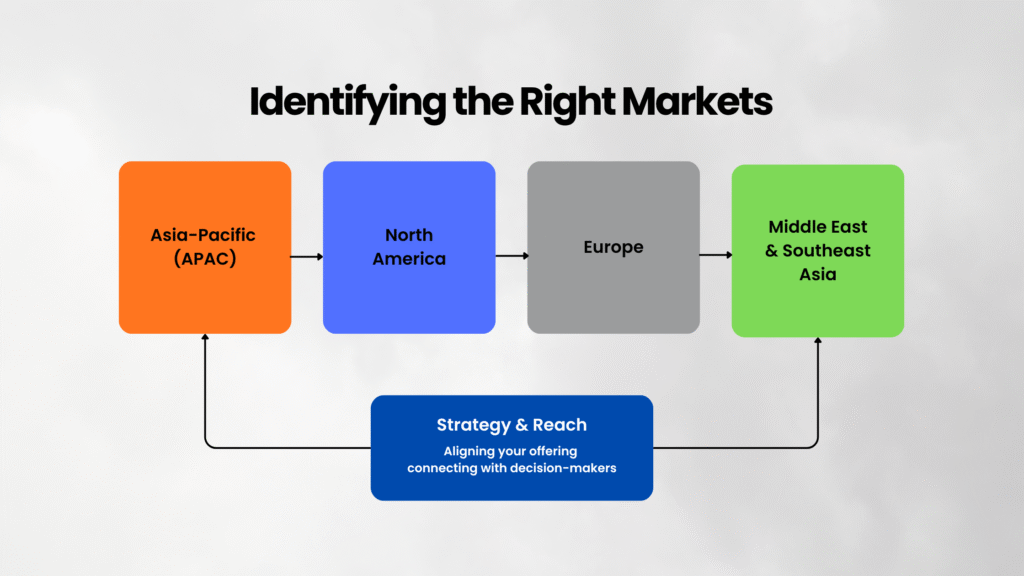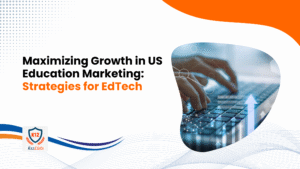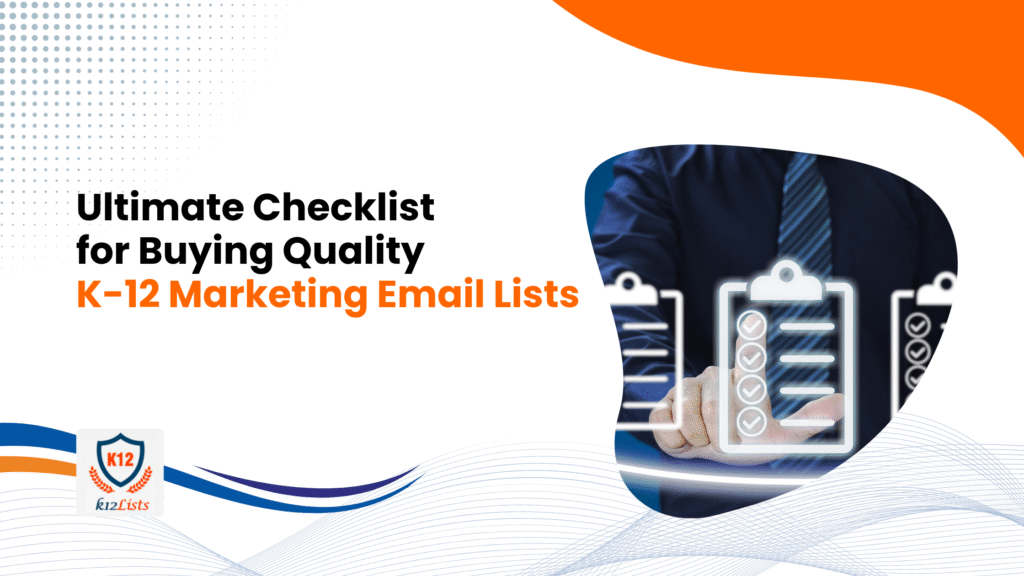How Can EdTech and Training Companies Expand in the Global Education Market? The global education market in 2026 presents limitless opportunities – but also growing competition. As classrooms become smarter and learning goes digital, EdTech companies, training providers, and education consultants are racing to capture attention across continents. To succeed, they must focus on strategies that help them reach education decision-makers effectively, whether they are school administrators, curriculum directors, or IT heads. By leveraging data-driven insights and AI-powered outreach, these businesses can unlock new markets and forge meaningful global partnerships.
To succeed, organizations need more than innovation; they need data-driven global outreach strategies that help them connect with the right schools, universities, and education leaders. The key is precision – understanding where the demand lies, who the decision-makers are, and how to engage them effectively.
From AI-powered classrooms to international partnerships and e-learning collaborations, the education industry has evolved into a vibrant ecosystem of technology and transformation.
Let’s explore the emerging trends, verified data practices, and smart outreach methods shaping business expansion in the global education sector in 2026 and beyond.
Are you looking to connect with decision-makers in the global education sector? Explore our Verified K-12 Email List to reach the right contacts and expand your business.
1. The Global Education Landscape Is Expanding Faster Than Ever
According to HolonIQ, global education and training expenditure is expected to exceed $10 trillion by 2030, fueled by digital transformation and lifelong learning trends.
Several key forces are shaping this growth:
- Digital learning platforms have reduced geographical barriers, enabling global reach.
- Government investments in skills development and higher education are surging.
- Corporate learning programs are bridging education-industry gaps.
- Hybrid education models are creating new demand for tech and data integration.
This expansion opens the door for companies offering solutions that improve learning outcomes, institutional efficiency, or student engagement – but success depends on targeting the right regions and institutions.
2. Identifying the Right Markets: Where Growth Is Accelerating

Not all education markets are growing at the same pace. The smart approach is to focus on regions where policy support, digital readiness, and institutional adoption intersect.
Asia-Pacific (APAC)
- Home to fast-growing economies with massive student populations.
- Strong government push for EdTech integration and STEM programs.
- High demand for K–12 digital tools, teacher training, and online certification platforms.
North America
- Mature but evolving market emphasizing personalization and data analytics.
- Universities and schools actively partner with global vendors for cloud-based education solutions.
Europe
- Strong focus on compliance, sustainability, and multilingual education platforms.
- Institutions prefer vendors with GDPR-compliant, verified data and localized strategies.
Middle East & Southeast Asia
- Rapidly emerging and well-developed markets with high investment in digital infrastructure.
- Opportunities in vocational learning, teacher upskilling, and education technology adoption.
Knowing which market aligns with your offering is the first step – the next is how to reach the right decision-makers within those institutions.
3. Reaching Education Decision-Makers Across Borders
Global growth begins with local connections. To expand internationally, businesses must connect with decision-makers who understand institutional needs and budgets.
Here’s what works best:
- Data-driven segmentation: Categorize institutions by size, type, and funding model.
- Localized communication: Adapt your outreach tone and offer to cultural expectations.
- Verified contact intelligence: Access accurate email data for administrators, deans, and department heads to ensure your message reaches the right inbox.
For example, a global training provider entering the APAC region should prioritize verified contact data for curriculum directors, IT heads, and procurement officers – not generic info@school addresses.
Need verified contacts? Our K-12 email lists provide the precise data you need to connect with education decision-makers worldwide.
4. Data Intelligence: The Backbone of Global Education Marketing
When entering new markets, you can’t rely on assumptions.
Accurate, verified education data gives your outreach the precision and confidence needed to scale efficiently.
Benefits include:
- Targeted reach: Identify verified contacts within K–12, higher education, or vocational institutions.
- Market insights: Understand institutional trends by geography, size, and specialization.
- Improved engagement: Personalized outreach increases trust and response rates.
With clean, compliant contact databases, you can launch campaigns that reach real educators and decision-makers globally – instead of wasting efforts on unresponsive or outdated leads.
5. Adapting Your Marketing Strategy for Global Relevance
Every education system operates differently, so a single campaign won’t work everywhere.
To truly succeed, brands must adapt both message and medium.
Personalization by Region
- In North America: emphasize innovation and ROI.
- In Europe: highlight compliance and sustainability.
- In APAC: focus on scalability and affordability.
Localized Storytelling
Develop case studies or success stories that reflect regional goals.
For instance, showing how your solution improved digital learning in Southeast Asia can resonate with institutions across similar developing regions.
Multi-Channel Engagement
Combine email marketing, professional networking (LinkedIn), and virtual education summits to build meaningful global relationships.
6. The Role of Partnerships in Driving Global Reach
Collaboration fuels expansion. Forming alliances with educational bodies, associations, and distributors can accelerate entry into new markets.
Key examples:
- Partner with local EdTech integrators for in-market credibility.
- Collaborate with education ministries or training boards for pilot programs.
- Join international education expos to showcase your solutions directly to decision-makers.
However, successful partnerships start with accurate data – knowing whom to approach and how to initiate value-driven discussions.
7. Overcoming Barriers: Compliance, Language, and Trust
Expanding globally isn’t without challenges. Institutions are highly cautious about data sharing and partnerships.
Here’s how to navigate these barriers:
- Ensure compliance with global data regulations (GDPR, CAN-SPAM, PDPA).
- Use multilingual outreach to improve engagement and show cultural awareness.
- Leverage verified databases that comply with regional data standards.
By prioritizing compliance and respect, you establish credibility and build trust – the foundation for sustainable growth.
8. Future Outlook: Where Global Education is Heading
As education and technology continue to merge, new opportunities will arise from:
- AI-driven learning analytics and personalized curriculum delivery.
- Cross-border digital credentials recognized by international institutions.
- Increased demand for verified education contacts as institutions seek data-driven partnerships.
Businesses that combine innovation with precision targeting will lead this next phase of global education evolution.
Conclusion: Turning Global Potential into Real Partnerships
The global education market offers boundless potential – but capturing it requires more than a great product. It demands data accuracy, cultural intelligence, and personalized outreach.
When your campaigns reach verified academic decision-makers, your chances of forming meaningful global partnerships rise exponentially.
So as you plan your international education strategy, invest first in the right data foundation – that’s how growth truly begins.
As you plan your international education strategy, invest first in the right data foundation – that’s how growth truly begins.
Looking for verified education contacts? Visit K-12 Lists to explore our high-quality email lists and take the first step toward expanding your reach in the global education market.
Frequently Asked Questions (FAQ‘s)
Major growth areas in the global education market include APAC, and the Middle East, driven by digital learning, skill-based education, and increased government funding for technology integration.
By identifying target regions, understanding local education policies, and reaching verified institutional decision-makers using compliant, data-driven strategies.
Personalized outreach tailored to region, institution type, and role improves engagement, builds trust, and increases partnership opportunities.
AI-powered analytics, predictive outreach, and verified data partnerships will shape the global education market beyond 2026. These trends will help institutions and EdTech providers make smarter decisions, personalize engagement, and scale globally with precision. Data accuracy and automation will become the foundation of sustainable growth in education marketing.






